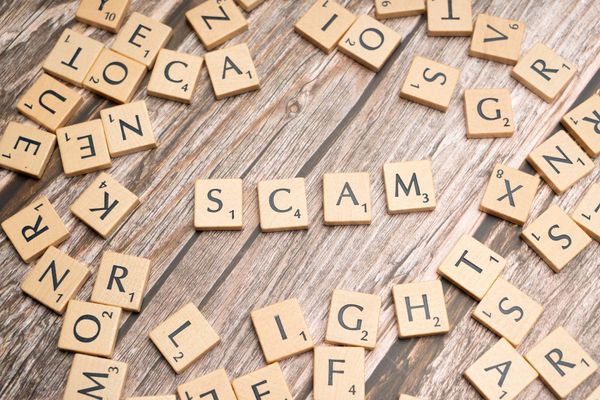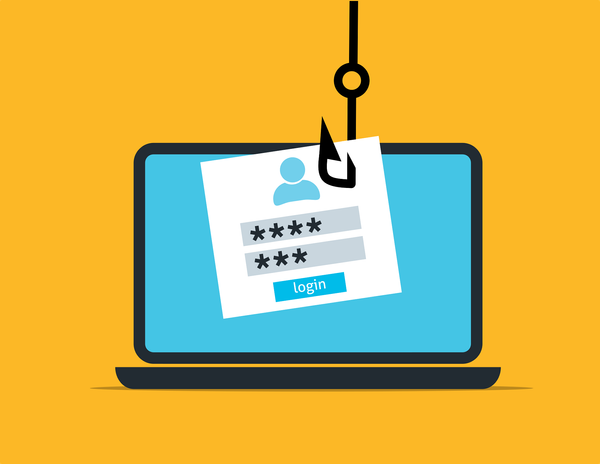What to Do If You’ve Been Scammed Online: 5 Steps to Take ASAP

If you’ve fallen victim for one of the numerous online threats on the web and want to find out what to do if you’ve been scammed online, you’re in the right place.
Online, trust is currency, and while the majority of users have honest intentions, some exploit trust to achieve their malicious objectives. Scammers are after your money, identity, or information. As a result, the internet's governing currency, trust, is getting depreciated.
While it can be challenging to put an end to ever-evolving cyber threats, we can alleviate some of the damage that's been done.
So, to answer your question, we've put together this ultimate roadmap to teach you how to avoid online scams, and even beat online scammers at their own game. Let's dive in.
If You've Been Scammed Online, Follow 5 These Steps
So, you've been scammed online–now what? Scams take different forms, which is why we need to treat each one carefully and with utmost urgency. To navigate your way out of an online scam, follow these steps:
1. Determine the type of scam you've experienced
The first step is to figure out what kind of scam you fell for. Understanding this will guide your next actions. Here are some common types we identified:
● Phishing: Scammers trick you into giving away personal information through fake emails or websites.
● Fake online shopping: You buy something online, but it never arrives, or you receive counterfeit goods.
● Investment fraud: Fake investment schemes promise high returns but are designed to steal your money.
● Imposter scams: Scammers pretend to be romantically interested to gain your trust and then ask for money.
Here's a tip: Use our free AI-powered scam detection tool, Scamio, to check for known scams and avoid falling victim to them.
2. Document everything for potential resolution
Document everything related to the scam if you plan on reporting it or trying to recover your losses.
Keep emails, messages, and any communication with the scammer, as well as any receipts, bank statements, or proof of payment. If you can, save websites, profiles, or messages related to the scam.
You’ll need these details when you file a police report with the authorities. Plus, it's good evidence if you need to dispute charges with your bank, money transfer app, credit bureaus, or a government agency like the Social Security Administration.
3. Protect your devices and bank account
To prevent further issues, secure your devices and bank accounts immediately:
● Update passwords for all your accounts. Use strong, unique passwords, and add extra security to your accounts with 2FA
● Run a security scan on your devices to check for viruses or malware
● Check your bank and credit card statements for any unusual transactions
● Notify your bank or money transfer app about the scam and ask for advice on protecting your account. They might freeze, terminate, and replace your card or account.
4. Learn how to report a scammer
Reporting the scam will help authorities take action and aid in recovering your money. So, if you’re wondering how to report a scammer to the police and where to discover the best resources to report fraudulent behavior online, follow these resource:
● USA: FTC, IC3, BBB Scam Tracker (if you need more help figuring out where to report the type of scam you've experienced, check this resource)
● UK: Action Fraud, Citizen’s Advice
Provide details about what happened and use the documented information from the previous step. If you suspect that identity theft is involved, you must file an identity theft report. This will help you avoid suspicious online account activity (like fraudulent transactions or an unauthorized transfer).
5. Claim back your funds, identity, or resources
After reporting, focus on getting your money back or recovering any stolen identity.
Contact your bank, report the fraudulent transfer or transaction, and ask for a refund:
● For credit/debit cards, request a reversal of the charge.
● For bank transfers, ask to stop or reverse the payment.
Contact the company for a refund if you paid with a gift card. For cash sent by mail, contact the postal service. Legal help might be needed here to pursue these matters and get back your funds, so keep a lawyer's contact handy.
Understanding Different Types of Online Scams
Online scams take many, many forms. From suspicious emails to remote access connections that install malware or initiate fraudulent transactions under your name, we've seen it all. If you want to learn how to identify a scammer, the first step is to know more about the types of scams and how scammers operate.
How to tell if someone is scamming you online
To identify the scam type and what to do about it, learn about the most common forms of scams we identified below:
Phishing scams
Phishing is one of the most common forms of online scamming. It usually occurs via email, as online scammers send spam into your inbox to prompt you to click a link, call a number, or give up personal information. Phishing usually targets:
● Mass users via bulk emails
● High-profile professionals or organizations through whaling
● Vulnerable internet users, such as Gen Z or senior citizens, as well as people vulnerable by context (such as vishing calls claiming that someone's family member is in immediate danger)
| What to do | Instructions |
|---|---|
| Stop Interaction | Immediately stop interacting with any suspicious email, message, or website. Refrain from entering personal details if redirected to a suspicious website. |
| Disconnect from the Internet | Disconnect from your network to prevent the downloading of potential malware and malicious viruses spreading to other devices. |
| Backup Your Data | Back up important files using an external hard drive or USB to prevent potential data loss or corruption caused by malware. |
| Scan for Malware | Use our free malware scanner for Mac, or invest in the Bitdefender Total Security package, which scans all your devices, protects you from multiple types of malware, and provides VPN & Identity protection features. |
| Change Your Password | Change passwords for all affected accounts immediately, using strong, unique passwords. Try your best to not reuse passwords, as it increases the chance of getting multiple channels hacked. Instead, set complex ones and use this password manager. |
| Report the Incident | Notify your email provider of the phishing attempt by marking it as spam or phishing. Report it to the FTC (for USA) or the eConsumer platform for international care. |
Fake websites and online shopping scams
Fake websites deceive you into thinking they are legitimate sites, only to steal your personal or financial information, or infect your devices with malware. These sites mimic well-known brands or institutions to the finest detail, which makes it difficult to spot and prevent falling victim to such scams.
Chances are that if the website looks suspicious, meaning:
● It has no contact information
● The pictures or language is of poor quality
● It's very new and has low domain authority
● URL is misleading, or it's not secure (no HTTPS)
● Prices or deals are too good to be true, offering unreal value
It probably is.
Unfortunately, with fake websites and fraudulent eCommerce, you can't always tell you're being scammed. Your bank account proceeds with the transaction or wire transfer, but you never receive the product.
| What to do | Instructions |
|---|---|
| Stop All Interactions | If you have any ongoing transactions or interactions with the suspicious website, stop them. Do not enter more information. |
| Disconnect from the Internet | This is to prevent malware from downloading and spreading. |
| Backup Your Data | Use an external hard drive or USB to do so. |
| Scan for Malware | Try Bitdefender’s Bitdefender Total Security package to scan and detect malware, then strengthen your security measures. |
| Change Your Credentials | You must update credentials, and especially change passwords for any accounts you suspect might be compromised. |
| Report the Fake Website Scam | You can start by informing the legitimate company being impersonated about the fake website. In the USA, you can report the fake website to the FTC and FBI. Internationally, you can try this website, while for the UK, you can report it to Citizen’s Advice. |
| Contact Your Bank and Try to Get Back Your Money | Contact your bank or card issuer to request a reversal and a card freeze. If you wired the money, call 1-800-448-1492 for Wester Union, or 1-800-926-9400 for MoneyGram. |
In the USA, if you paid with a debit card, the bank will issue a provisional credit within 10 days, but it will take up to 45-60 days to wrap up the investigation.
If you find it difficult to fix the dispute with your bank or used an electronic payment form to pay the scammer, consult Regulation E and ask for your rights to be refunded.
Investment or money scams
We understand that such scams are truly devastating, especially since lost money means lost working hours and funds carefully budgeted to future-proof your goals. But worry not–there's a way to put an end to investment scammers, and even reclaim some of that lost money. Here’s what to do when scammed out of money:
| What to do | Instructions |
|---|---|
| Gather Documentation and Evidence | Conduct a background check and collect all relevant documents such as emails, investment agreements, transaction receipts, and communication logs. Screenshots of websites and any promotional materials are also useful. |
| Contact Your Bank or Financial Institution | Request your bank to freeze any further transactions related to the scam and escalate the problem to the fraud department, and if your credit has been impacted, to the relevant credit bureau. Request a fraud alert or credit freeze. |
| Report to Financial Regulatory Authorities | In the USA, the scam can be reported to the SEC or the CFTD. In the EU, you can report to national regulatory authorities and also to OLAF, especially if it involves EU funds or misconduct by EU institution members. For the UK, try the Financial Ombudsman Service. |
| Report the Fraud to the Federal Trade Commission (FTC) | Submit a detailed report through the FTC’s website. This helps track and combat fraud on a broader scale. |
| Check for Identity Theft | For the USA, monitor the major credit bureaus to stay updated on your credit status. If identity theft is involved, file an identity theft report immediately. |
| Seek Legal Advice | Investment scams are serious. Consult with a lawyer who specializes in financial fraud to get some guidance on legal actions you can take to recover your funds. |
Impostor scams (social media, romance, recruiter, and more)
Social media scams manipulate trust and emotions to steal your money, data, or even identity. Scammers use platforms like Facebook, Instagram, Twitter, LinkedIn, or even dating apps like Tinder to trick you into trusting them with your personal or financial information.
For example, romance scammers pose as potential partners, only to ask you to send money or reveal confidential information about your financial accounts in the long run.
On social media, scammers pose as recruiters or friendly users with similar interests, prompting you to click malicious links or pay a fee to be considered as a candidate.
| What to do | Instructions |
|---|---|
| Stop Communication | Block and report the scammer and report their profile to prevent them from scamming others. |
| Verify Their Identity | Use reverse image search tools. Tools like Google Images or TinEye can help identify if their photos are used elsewhere and help you better document your situation. |
| Secure Your Accounts | Change passwords and enable two-factor authentication (2FA). |
| Check for Malware | Submit a detailed report through the FTC’s website. This helps track and combat fraud on a broader scale. |
| Contact Financial Institutions | If money was involved, inform your bank or credit card company immediately. Request to block transactions, reverse fraudulent charges, or temporarily freeze your bank accounts. If you used your credit card, place a security freeze on your credit report. |
| Report to Authorities | Submit a report to the FTC (USA), Action Fraud (UK), or the Europol website (EU) |
How to Avoid Being Scammed Online: Simple Steps for Staying Safe and Secure
Don’t wait until it’s too late. Equip yourself with the tools and knowledge to stay safe online. Remember, every action you take today contributes to your digital footprint, so weigh your decisions in the online space and keep a defensive attitude when browsing the web.
Always be cautious online and verify sources. One good resource to help you do so is the Better Business Bureau, a non-profit organization focused on advancing marketplace trust and ensuring the legitimacy of businesses and transactions.
Take Control with Bitdefender

Why leave your online security to chance? Bitdefender offers advanced protection to keep your devices safe from threats. More than an antivirus, your shield against online fraud and cyber threats helps keep your location safe, scans for malware, and keeps scammers at bay.
Browse without fear. Explore our digital security solutions.
tags
Author

The meaning of Bitdefender’s mascot, the Dacian Draco, a symbol that depicts a mythical animal with a wolf’s head and a dragon’s body, is “to watch” and to “guard with a sharp eye.”
View all postsRight now Top posts
How to Protect Your WhatsApp from Hackers and Scammers – 8 Key Settings and Best Practices
April 03, 2025
Outpacing Cyberthreats: Bitdefender Together with Scuderia Ferrari HP in 2025
March 12, 2025
Streamjacking Scams On YouTube Leverage CS2 Pro Player Championships to Defraud Gamers
February 20, 2025
How to Identify and Protect Yourself from Gaming Laptop Scams
February 11, 2025
FOLLOW US ON SOCIAL MEDIA
You might also like
Bookmarks








